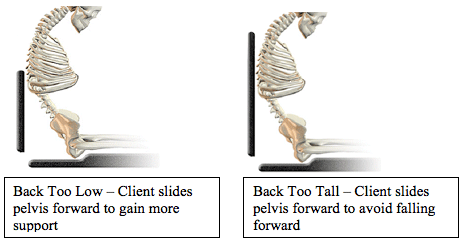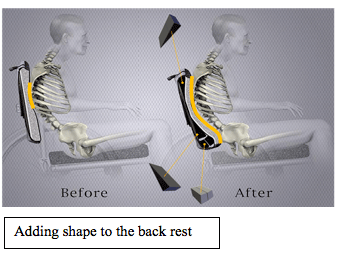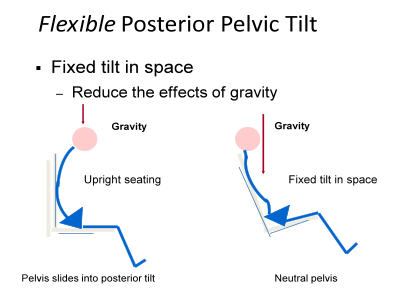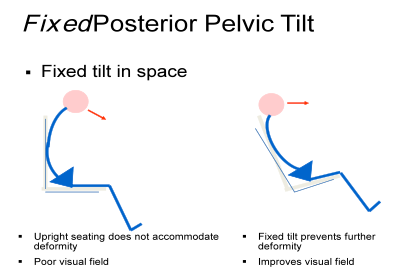Share:
Hello all!
In last month's article, I wrote about cushion considerations for seating a client with a posterior pelvic tilt. This month, I would like to discuss the importance of the back rest when seating a client with posterior pelvic tilt. In addition, I would like to talk about the role of gravity in assisting with positioning for a client who presents with a posterior pelvic tilt.
As I said last month, adequate support at the posterior pelvis must be provided in order for the cushion to perform as intended. The cushion and back rest work together to position the client who sits with a poster pelvic tilt. For the client with a flexible posterior pelvic tilt, the back rest will help to stabilize and position the pelvis in a neutral position. For the client with a fixed posterior pelvic tilt, the backrest provides support to position the client in an optimal position for him/her.
There are several points to keep in mind about the back rest when seating a client with posterior pelvic tilt. These include the height, shape and angle of the back rest.
In terms of the height of the back rest, it is important to prescribe one that is neither too tall nor too low for the client. If the back rest is too low for the individual client's needs, inadequate trunk or back support is provided for stability. The client will slide forward in order to gain more support through the back rest. Alternatively, the client may lean to the side in order to gain support from the arm rest. If the back rest is too tall for the individual client's needs, the client's trunk may be pushed forward, causing the client to slide into a kyphotic posture. See below for illustration of this.

Shape of the back rest is important as well. As I wrote last month, a client who has a fixed posterior pelvic tilt will have an accompanying increased kyphosis. Adding shape to a back rest allows a client to benefit from contours to secure the trunk in an optimal position and encourage normal curves. Adding shape allows the client's back to make full contact with the back rest, which promotes better pressure distribution. See below for a picture that illustrates how the addition of various shapes to the back rest provides for increased contact and support provided by the back rest for a client with kyphosis.

Angle of the back rest is another piece of the puzzle that can be addressed for a client who sits with afixed posterior pelvic tilt. Last month, I wrote about modification to the base of a cushion base to accommodate a fixed posterior pelvic tilt. For some clients, it may be appropriate to consider opening up the seat to back angle to accommodate the client who is unable to sit at a standard 90 degree angle. When the seat to back angle is opened up, both hips are positioned in extension. Opening up the seat to back angle can be achieved through the mounting hardware of the back rest. A fixed recline in the seating configuration positions the client's centre of gravity behind the base of support to reduce the effects of gravity while accommodating the fixed kypohosis and hip extension contracture.
Lastly, whether the client presents with a fixed or flexible posterior pelvic tilt, gravity can be used to facilitate positioning through the use of fixed tilt, or dump, in the wheelchair set up. For the client with aflexible posterior pelvic tilt in space, gravity assists to bring the pelvis into a neutral position. See the graphic below.

For the client with afixed posterior pelvic tilt, gravity does not alter the shape of the client's spine and pelvis, but it does assist to prevent further deformity and to improve the visual field for a client. See the graphic below.

In this article, I have not addressed seating for the client whose cause of posterior pelvic tilt is extensor spasticity. That is a topic for a future Clinical Corner article! As with all seating, clinical reasoning must be used when finding the optimal solution for an individual client's seating needs.